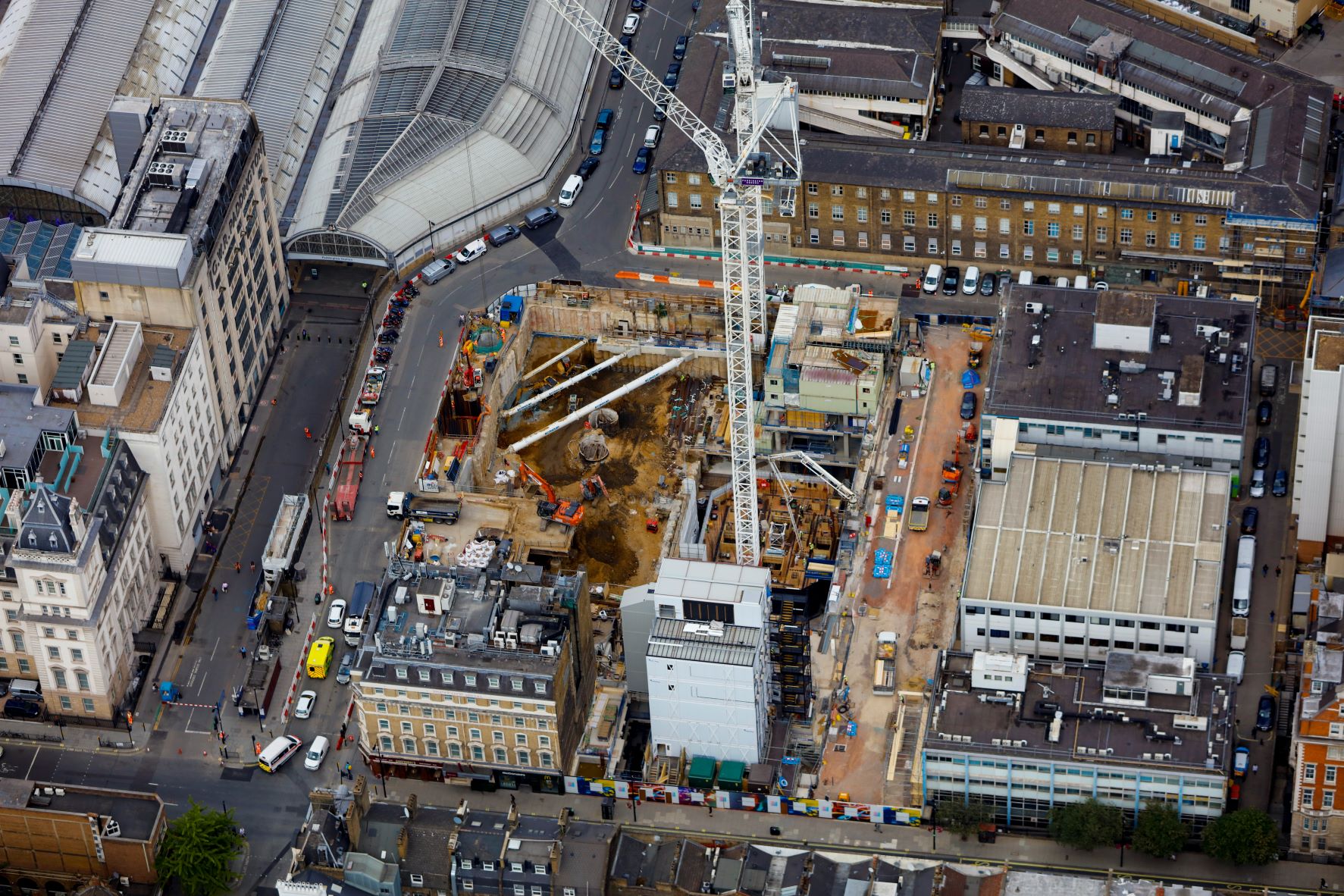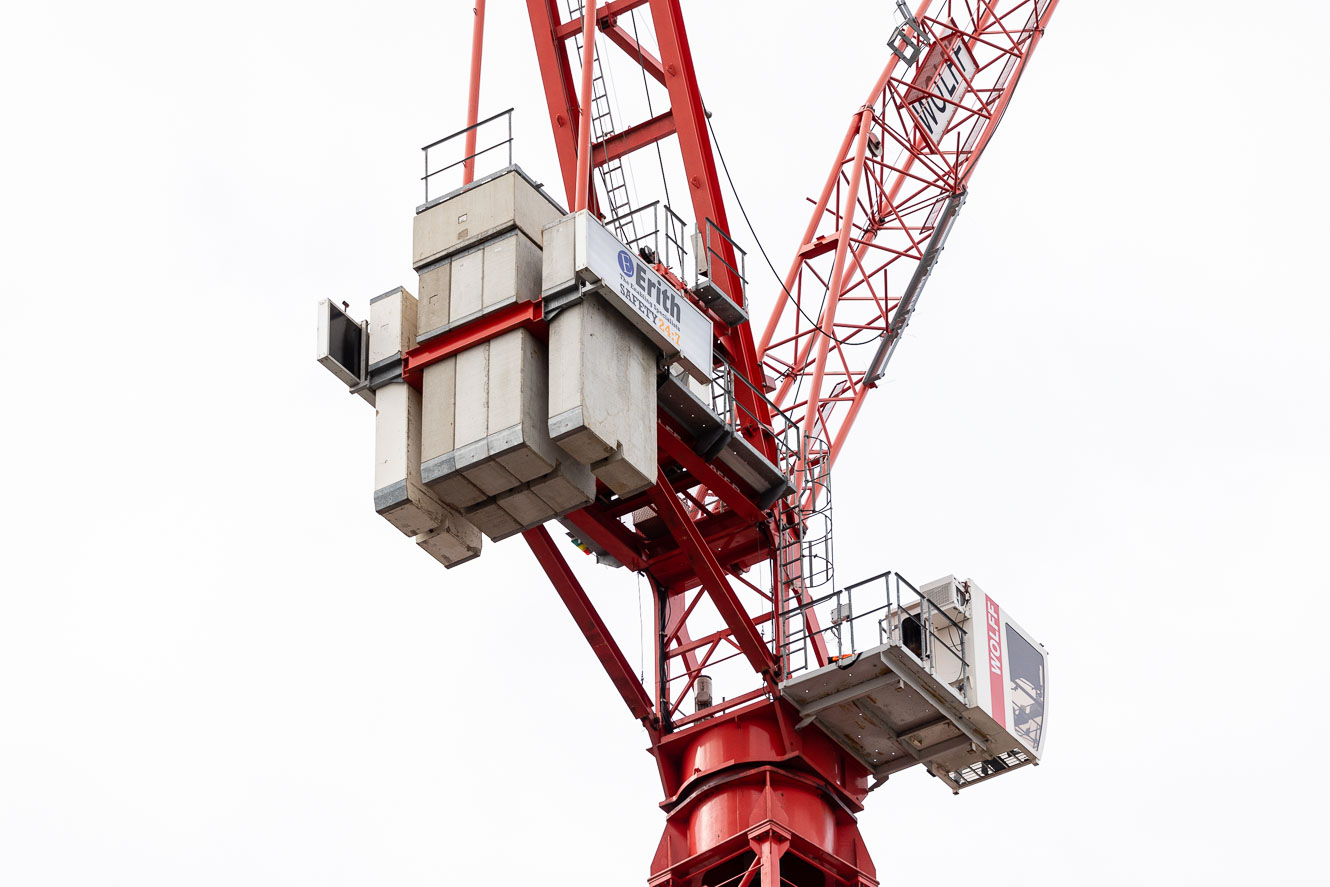The Fleet Building was constructed in the 1950’s. The reinforced concrete framed building consisted of seven storeys and a 13-storey tower with a two-storey basement. Part of the basement contained a BT chamber and cable shaft rising from the underlying tunnel and access lift shaft which linked the tunnel network.
Throughout the demolition process, we adopted a series of demolition techniques to accommodate the integrity of sensitive abutting assets; most noticeably works around BT Shafts and UKPN sub-stations. To ensure minimal levels of vibration, we adopted diamond saw cutting techniques. This intricate technique also allowed for a more controlled deconstruction to take place in sensitive areas of the site.
We constructed a guide wall to all areas that required the installation of the Secant Wall. The guide wall was constructed to cater for the loads imparted on it by the rig during the pile installation. To achieve the tolerances required, a cased system was implemented. Therefore, the secant wall was constructed using the 1180mm secondary and 1180mm primary traditional segmental rotary cased wall. The drilling equipment was 1060mm in diameter to ensure progress of drilling inside the casings to prevent risk to the stability of the bore.
The basement demolition and excavation were completed from below at formation level -2.4 using 45/60 tonne excavators. Materials from both the breakout and the excavation were processed in segregation. In total, approximately 70,000m3 of material was removed from site.
As part of the piled raft solution there was a requirement for the installation of 1800mm dia. rotary bored settlement control piles. The piles were installed using the same rigs as those employed for secant wall construction. The bore was temporarily cased to clay providing stability and edge protection at working platform level. The base of the pile bore was filled with loose pile arisings to further reduce any potential base capacity. A reinforcement cage was then placed by the attendant crane and set to the required level. The tremmie pipes were then installed into the pile before the concreting process could commence. The tremmie string was removed from the pile. To ensure that there was suitable concrete at the cut off level it was necessary to over pour the concrete above the top of the reinforcement cage.
All temporary works were designed by our in-house design team Swanton Consulting. Works included flying shores, flying pile caps and thrust blocks to support the new secant wall. These installations allowed for the breakout of the ground bearing slab and the subsequent excavation down to formation level.
The site’s boundary presented the possibility of ancient monuments, including a concrete encased tomb in the west side of Plumtree Court. As a result, our services incorporated an archaeological watching brief which took place across two sections of the site believed to contain the archaeological remains.
The Fleet Building was once a British Telecom switching station used to route call traffic throughout London. A substantial cable-way and a vertical shaft and separate lift shaft, which link to tunnels beneath the site, were present within the existing basement of the Fleet Building. The cable chamber and shafts remained active over the course of the demolition operation. All cables and shafts were also waterproofed using sealed torch.
We undertook extensive works to/around the existing BT lift shaft, which was demolished down to a height above formation level of the B2 slab. The shaft contained asbestos which required methodical and diligent removal. To facilitate this, we constructed a double boarded steel deck allowing access for subsequent strip-out and deplant works – enabling the erection of a scaffold enclosure. The BT shafts ring sections were then detached from the structure below. The asbestos was removed at the work face, allowing the ring sections to be lifted to site level for further asbestos stripping.
We also ensured that protection to the BT Tunnel was maintained throughout the course of the works where excavation works were undertaken in close proximity. In light of this approach, we installed a traffic light tracking system which would generate notifications via email and text notifying all staff that works surrounding the BT tunnel if levels were exceeding the agreed baseline vibration levels.
In line with the Social Value Act 2012, we successfully integrated Corporate Social Responsibility issues within our on-going operations. Examples of initiatives that were held throughout the contract include
- Safe cycling campaigns – promoting safer methods of cycling within an urban environment. The events allowed cyclists the opportunity to sit in the driver’s seat and gain a greater understanding of the vehicle’s pioneering safety modifications. The workshops also provided bike maintenance as well as safety checks and security registrations.
- Schools Careers Fair – we attended a school career fair in an attempt to educate and inspire the younger generation about the opportunities available in construction and how similar journeys have flourished through our works at the London Development Project.



